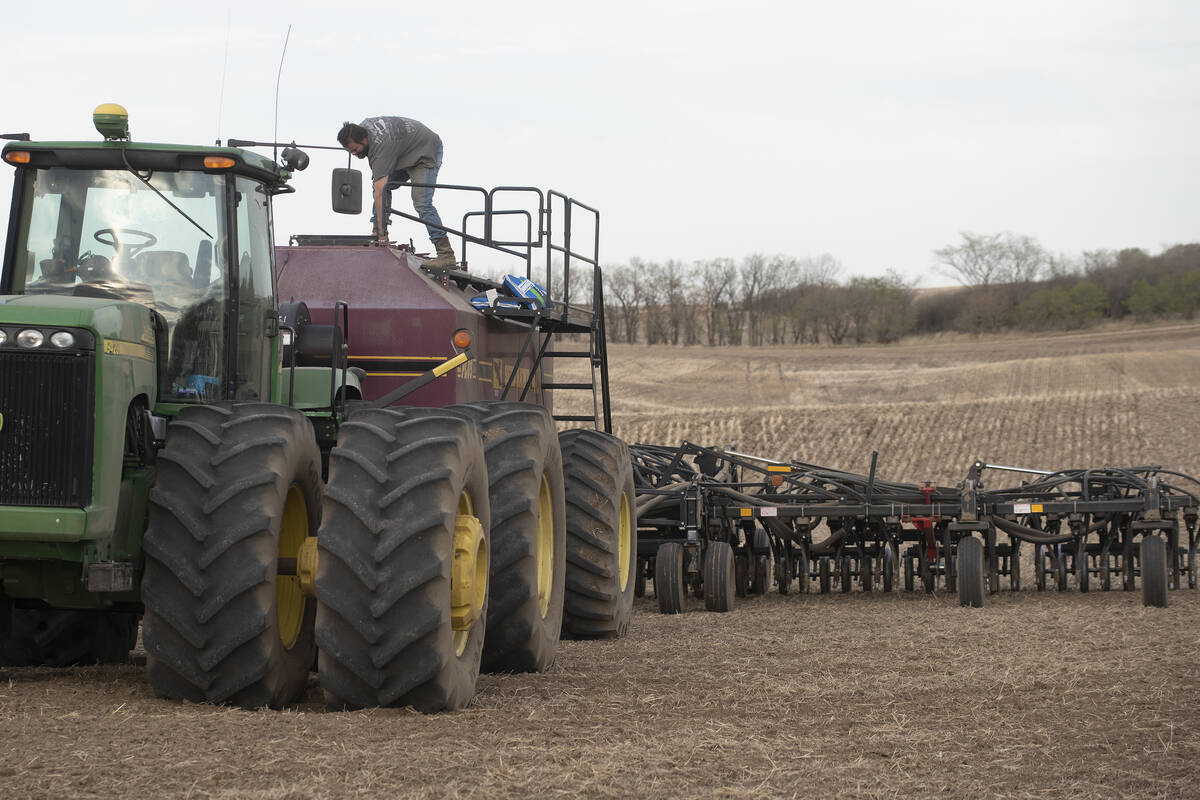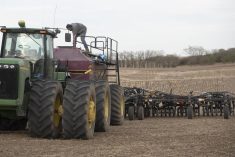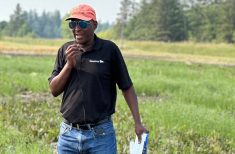Manitoba’s 4R Nutrient Stewardship is heading online.
The program, announced in 2013, is a shared undertaking by the Canadian Fertilizer Institute, Manitoba government and the Keystone Agricultural Producers. It aims to balance environmental and agricultural interests.
Four years later, the initiative has expanded to encompass education and tracking online.
Initially packaged exclusively through day-long accreditation workshops, the program now has three free online modules.
Steve Barron, of Double Diamond Farm Supply and a 4R representative, said few have opted for online training thus far. About 70 people were accredited through in-person workshops in 2016, while another 54 attended sessions at Kelburn Farm and Brandon in late February 2017.
- Read more: What is 4R Nutrient Stewardship?

“I believe it’s driven from the consumer,” he said. “The person who’s purchasing their food wants to feel that it’s being built in a safe manner using nutrition management and I think the industry wanted to be ahead of the curve. They wanted to be developing a program and a safe message for the consumer so that the government isn’t going to be legislating on how we treat our nutrient management.”
The program, which offers 5-1/2 education credits of the 40 required biennially for certified crop advisers, has largely targeted agronomists.
Barron estimated that 75 per cent of attendees have been agronomists, with the remaining 25 per cent made up of industry or government representatives.
Mitch Timmerman, Manitoba Agriculture agri-ecosystems specialist and one of the provincial representatives to help develop the program, said he was encouraged by its direction, although some refinement is needed.
Read Also

Nutrien pays farmers for efficient nitrogen
Nutrien’s Sustainable Nitrogen Outcomes (SNO) program pays Prairie farmers to limit nitrogen loss and, therefore, fertilizer-related greenhouse gas emissions.
“I would say that I’m pretty justified in deferring to industry,” he said. “I would say mostly it’s about process in that industry, at this grassroots kind of level, has to get behind it to actually do the work, count the acres, work with the farmers, get them on board… as long as they figure out how to sell it to their own people, we’ll continue to support it and I think it’s mostly about implementation.”
An electronic logging system has also been launched, allowing acre numbers, crops and municipality of 4R practising farms to be submitted online.
Branching out
While interest has largely been isolated to agronomists, Barron noted that efforts have been made to engage the producer directly.
Demonstration plots were planted at Morris, R & D Farms near Manitou and Beaver Creek Farms near MacGregor. A combination of fertilizer types, application rates, timing, and placements were included, with both yield and residual soil nitrogen after harvest measured.
Curtis Cavers, the agronomist responsible for the three sites, stressed the importance of soil tests and customizing 4R plans to a specific farm.
“Use those results and you might be able to go with less fertilizer than you originally thought you would,” he said. “Track the crop and see how it does throughout the growing season. If it looks like, through various tissue tests, that it needs a little extra, then add some in season. But even there, don’t add too late because if you leave it too long, it doesn’t do what you hope it would do. If you apply nitrogen too late, instead of going into yield it just shows up in soil tests in the fall.”
This year’s results wrap up what Cavers said is a three-year study using 4R techniques in the field.
Full results are being analyzed, he said, with results hopefully showcased in the next growing season.
“I would say it’s just in the infant stages, but it is catching on,” Barron said. “After we had our demonstration farm tours last summer in MacGregor, Manitou and Morris, there was a lot of feedback that the producers found they weren’t completely sure about the 4R nutrition message. It was a little muddy in the fact that, is it government driven? Is it industry driven? What is this? But they’re starting to come around in the fact that they’re seeing this as proactive and not going to be government driven in the near future.”
The 4R initiative also plans to join forces with soil ecologist Mario Tenuta of the University of Manitoba in 2017, a move Barron says will incorporate more formal research into the initiative.
















